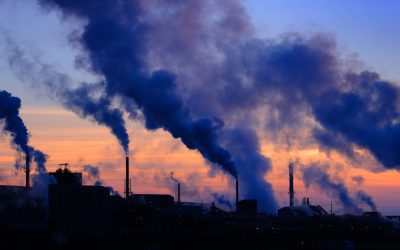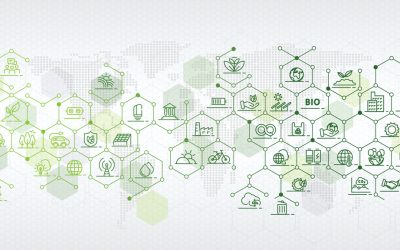
The 1.5-degree Celsius target, agreed upon as part of the Paris Agreement, represents a global commitment to limit the average temperature increase to this level above pre-industrial times in an effort to avoid the most catastrophic impacts of climate change. This goal is grounded in scientific research suggesting that surpassing the 1.5°C threshold could lead to severe and irreversible impacts on ecosystems, human health, and livelihoods worldwide.
Feasibility of the 1.5°C Target
The feasibility of achieving the 1.5°C target is a matter of intense debate and research. The World Economic Forum (WEF) emphasises the importance of not exceeding this limit to prevent worsening and potentially irreversible effects of climate change. The International Energy Agency (IEA) outlines a narrow but feasible pathway to net zero emissions by 2050, crucial for staying within the 1.5°C increase, noting significant challenges but also progress in clean energy technologies (WEF, 2023; IEA, 2023).
Achievability and Necessary Actions
Achieving the 1.5°C target requires transformative systemic changes across energy, urban, land, and industrial systems globally. According to the IPCC, this includes the upscaling and acceleration of far-reaching, multi-level, and cross-sectoral climate mitigation efforts, complemented by robust adaptation strategies. The current national pledges on mitigation and adaptation fall short of the necessary ambition level, highlighting the need for a significant increase in collective effort and enhanced institutional capabilities worldwide (IPCC, 2023).
Timeframe
The IPCC stresses the urgency of immediate action, with net zero emissions needed by 2050 to stay within the 1.5°C limit. This ambitious timeframe necessitates an unprecedented global mobilisation of financial, technological, and intellectual resources to transform our energy systems, enhance energy efficiency, and foster innovative climate solutions (IPCC, 2023).
While the target is ambitious and requires a substantial escalation in efforts at all levels of society, the growing deployment of clean energy technologies and the formulation of more ambitious climate policies provide some grounds for optimism. However, to make the 1.5°C target achievable, concerted action is needed now more than ever, encompassing both mitigation and adaptation strategies to ensure a sustainable and equitable future for all.
For a deeper understanding and further details, you can refer to the comprehensive discussions and findings on this topic by the World Economic Forum (WEF, 2023), the International Energy Agency (IEA, 2023), the MIT Climate Portal (2023), and Chatham House (2023).
References
– World Economic Forum. (2023). *The 1.5 C climate threshold: What it means and why it matters*. [https://www.weforum.org/agenda/2023/09/prevent-1-5-degrees-celsius-climate-threshold/](https://www.weforum.org/agenda/2023/09/prevent-1-5-degrees-celsius-climate-threshold/)
– International Energy Agency. (2023). *Net Zero Roadmap: A Global Pathway to Keep the 1.5 °C Goal in Reach – Analysis*. [https://www.iea.org/reports/net-zero-by-2050](https://www.iea.org/reports/net-zero-by-2050)
– MIT Climate Portal. (2023). *Explained: The 1.5 C climate benchmark*. [https://climate.mit.edu/explainers/explained-15-c-climate-benchmark](https://climate.mit.edu/explainers/explained-15-c-climate-benchmark)
– Chatham House. (2023). *What the IPCC report means for global action on 1.5°C*. [https://www.chathamhouse.org/2023/03/what-ipcc-report-means-global-action-15c](https://www.chathamhouse.org/2023/03/what-ipcc-report-means-global-action-15c)
– IPCC. (2023). *Global Warming of 1.5 ºC*. [https://www.ipcc.ch/sr15/](https://www.ipcc.ch/sr15/)
What are the 9 Planetary Boundaries and why do they matter?
The planetary boundaries framework, first introduced in 2009 by Swedish scientist Johan Rockström and his colleagues, updated in subsequent...
Scope 3 vs. Scope 4 Emissions in Business Sustainability: Understanding the difference
In the realm of business sustainability, understanding and mitigating greenhouse gas emissions have become paramount. Among the various categories...
Scope 4 emissions: Addressing Upstream and Downstream emissions
In recent years, the conversation surrounding sustainability in business has expanded beyond just internal operations to encompass the entire value...
Understanding Emissions Scopes: What are scope 1, 2 and 3 emissions?
Understanding and effectively managing greenhouse gas emissions is essential in Business Sustainability. Emissions are commonly categorised into...
Understanding Net Zero
In recent years, the concept of achieving "net zero" has gained significant traction in the realm of sustainability, particularly concerning...
Embarking on a Business Sustainability Journey: Key Steps to Get Started
In today's increasingly environmentally-conscious world, businesses are recognising the importance of integrating sustainability into their...
What is Business Sustainability? Building a Sustainable Future
Building a Sustainable Future: The Key Elements of Business Sustainability In today's world, the concept of sustainability has become more than just...







